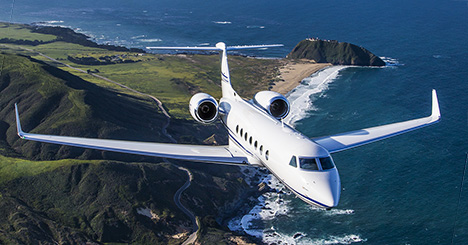
July 18, 2017
NBAA officials recently met with representatives of the European Aviation Safety Agency (EASA) to address questions surrounding the differences between FAA’s D095 Minimum Equipment List (MEL) authorization, and the International Civil Aviation Organization (ICAO) MEL standards, to which EASA adheres.
During the meeting Jeroen Jansen, EASA’s senior ramp coordination officer, confirmed that a D095 Letter of Authorization (LOA) does not meet EASA requirements for business aircraft operators, but he assured NBAA staffers that EASA is working with FAA to find a reasonable solution.
In March, Laurent Chapeau, head of ramp inspections for the DGAC, France’s civil aviation authority, informed the audience at NBAA’s International Operators Conference that during safety assessment of foreign aircraft inspections, an LOA D095 is not considered sufficient to ensure compliance to ICAO standards.
This declaration caused concern among U.S. operators traveling to France, prompting many noncommercial operators to believe they need to apply for a more burdensome D195 authorization, which requires approval from an FAA inspector and frequent updates to meet EASA and ICAO requirements.
However, NBAA’s Vice President of International and Regulatory Affairs Doug Carr, cautions, “Part 91 operators should resist the rush to apply for a D195 authorization,” which is typically reserved for commercial operators. “Instead, operators should ensure they are fully compliant with D095 and allow the FAA, EASA and NBAA to find a solution that will satisfy EASA inspectors.”
FAA officials have confirmed that they believe it is in the interest of all parties to find a more efficient solution than D195 to fill the gap between FAA and EASA authorizations, and they are now trying to make this happen.
Carr warns: “Operators must have all four elements of a D095 completed and onboard to be compliant, but must also include any supplemental type certificates (STCs) and an MEL tailored to the equipment installed on the aircraft.” The four elements of an MEL include:
- FAA D095 LOA, which authorizes the operation of the specific aircraft make, model, serial number and registration number
- The MEL Procedures Document, developed by the aircraft operator and including maintenance and operations procedures
- Policy Letter PL 36, the Part 91 Master Minimum Equipment List (MMEL) preamble, obtained from the FAA’s flight standards information management website
- The MMEL itself, as developed by the aircraft manufacturer and the FAA
The MEL must include any STCs and be tailored to the equipment installed on the aircraft. For example, if a new piece of galley equipment is installed on a five-year-old aircraft, that item may not appear on the manufacturer- and FAA-developed MMEL. Such an aftermarket installation must be included on a D095 MEL for operations in Europe.
Additionally, EASA’s focus on performance-based standards included in ICAO Annex 6, Part 2, Chapter 2.5 requires operators to “have information relevant to the airplanes required communication, navigation or communication specification capabilities included in the MEL.” This standard requires the operator to take a broader view of specific equipment and its relationship to other systems and performance requirements.
If operators are found to not be in compliance with the ICAO MEL requirements, it could end in a Category 2 finding, requiring the operator to take corrective actions within a reasonable period. If, in addition, defects have been incorrectly deferred because of a non-compliant MEL, a Category 3 finding could result, which means the operator must correct the issue before the next flight.
To support noncommercial business aircraft operators, the FAA is developing a plan to address EASA’s concerns with the FAA’s D095 process and to incorporate STCs and performance-based avionics. NBAA expects the FAA to release a plan later this summer.
Learn more about complying with MEL requirements.
The March/April 2017 edition of NBAA’s Business Aviation Insider magazine has additional tips to prepare for EU ramp inspections.


 International Business Aviation Council Ltd.
International Business Aviation Council Ltd.